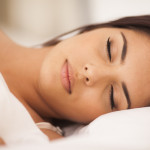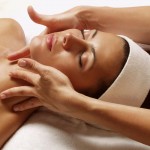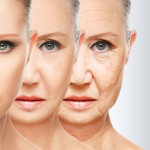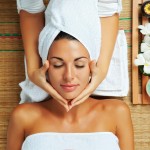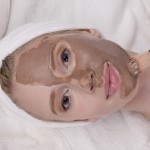Body brushing or dry skin brushing is basically what it sounds like, a thorough and firm brushing of the skin prior to a shower or body treatment. Your spa therapist will use a clean brush with firm, natural bristles and then sweep in circular motions in the direction of your heart. It may sound unpleasant or painful, but if it is done correctly, it can be a blissful experience. So much so, that you will want to pick up your own body brush and make it a daily ritual in your own bathroom.
How can this be a benefit to you? The skin is a major organ, just as much as the heart, lungs, or kidneys. Its primary functions include respiration, excretion, blood and lymph circulation, and immunity. However, unlike other organs, the skin can be rejuvenated by a variety of therapeutic techniques, such as body brushing. Different forms of skin brushing have been practiced for many years and by many different cultures. In China, it is traditionally used with a loofah, made from mature fibres of a vegetable called silk squash. Greeks and Roman used to use strigils, which were specialized, spoon-like skin scrapers. These were used to remove dirt, sweat, and oil before being bathed. The Cherokee Indians used dried corn cobs to perform skin brushing to enhance skin beauty and durability. The Comanche Indians used sand from the Texas river bottoms to scrub their skin and the Texas Rangers followed their example. There is also evidence that Ancient Egyptians practiced brushing and exfoliation. Body brushing has an undeniable power of touch which is meant to invigorate your senses and boost circulation. It also has an exfoliating effect which helps shed dead skin cells, leaving your skin smoother and brighter. It can also help to relieve ingrown hair follicles. Some people believe that body brushing can also eliminate toxins from the body, reduce the appearance of cellulite, and be an excellent stress reliever. Dry skin brushing may go even deeper, helping to support your digestion and organ function. Even though there are numerous benefits to body brushing, it can be painful if done incorrectly. As a rule of thumb, you should avoid damaged or sore skin.
So, what can you expect from a body brushing treatment? Well often you will see dry skin brushing, or body brushing on spa menus. These are common at the beginning of a body treatment, including wraps or massages. It is ideal to get rid of dead skin and other impurities as well as increase circulation so you can benefit more from the treatment that follows. The spa therapist will used a sterilized, firm brush and move it in a brisk, circular motion all over your body. The idea is to brush in the direction of your heart to boost circulation and encourage lymph flow. If you find the treatment to rough, it is okay to ask for a gentler touch. Note that body brushing is a quick process, so rarely will you see it as a standalone treatment.
If you would like to try it at home, invest in a brush that has tightly packed, short and firm bristles. Also look for a brush with a long handle that can help you reach awkward places on your back. Start at your ankles and calves, and then work your way up with a circular and sweeping motion. Try to do this in the morning, as it can help your body wake up for the coming day. Then definitely shower afterwards to rinse off dead skin cells. After the shower, always make sure to moisturize, to keep your skin looking bright and smooth longer. Between body brushing sessions, make sure you wash your brush in hot soapy water or try adding a drop of tea tree oil for its natural antibacterial properties. Rinse and then leave to thoroughly dry in a well ventilated area. Make-up brush cleaners are also a good cleaning product to use.
Ask your spa therapist for a soothing body brush at your next spa visit. Do not have a spa in mind? Why not try our Spa Treatments London in any of our luxury spas, such as the Spa at Montcalm.



